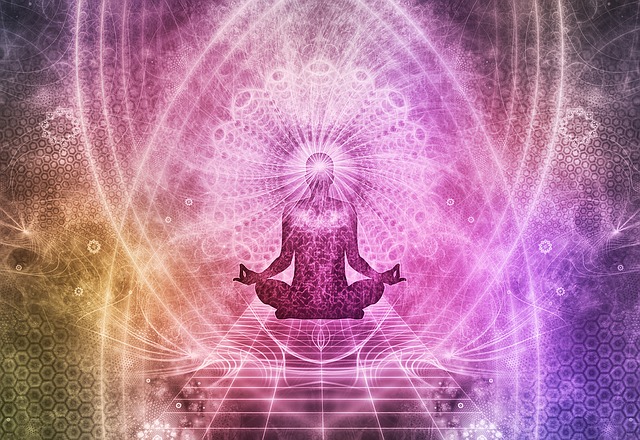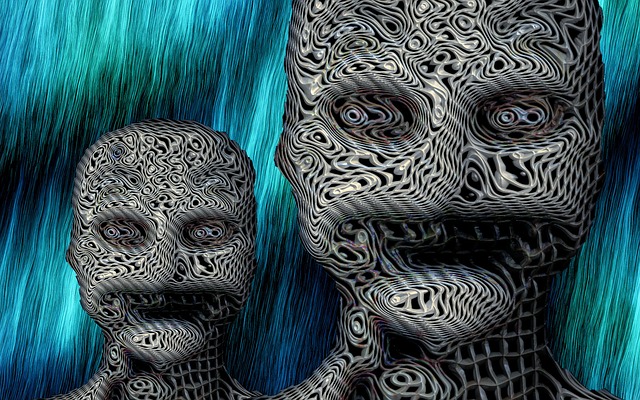Consciousness is best described as a person’s awareness of the environment they find themselves in. Its made up of all sorts of different thoughts, feelings, senses and sensations.
When you’re experiencing the most common type of consciousness you’re aware and awake, but there are many more different types of consciousness which a human being can experience.
The different types of consciousness can be grouped together in three main types, non-reflective consciousness, which covers things like bodily feelings, memories, sleep and comas, reflective, or self-conscious states of consciousness, which includes pragmatic, lethargic and hyperalert types of consciousness, and other varying degrees of consciousness, for example relaxed, fragmented, hysterical and trance states.
Today we’re going to discuss the different altered types of consciousness and what they mean.
Non-reflective consciousness Feelings in your body
Your body is hard at work at every moment of everyday, undertaking tasks that you would never give a moment’s thought to. While you’re busy completing a task your body is growing hair and nails, digesting last night’s dinner, your lungs are breathing all the time and your heart is busy beating away.

All of this is happening without you being fully conscious of it. In fact, you’d only become conscious of these feelings should anything go wrong with them. In that case, a feeling of pain would alert you to the issue immediately. But if all is well, this is state of consciousness we’re never totally aware of.
1: Memories
Memories are stored in our brains in an altered state of consciousness all the time. They only get reactivated if you summon them by thinking about the memory. At this point they become part of our self-conscious.
2: Coma
A coma is one of the most famous types of non-reflective consciousness a human being can enter. When a person is in a coma they are typically unaware of the world around them, usually for quite a long time. Although, there have been instances of people waking from comas who were able to recall what was said during their time in a state of altered consciousness. A coma can be brought about through catastrophic brain injuries, certain illness and epilepsy.
3: Non-rapid-eye-movement sleep
Typically we have minimal mental activity when we’re in the type of light sleep called non-rapid-eye-movement sleep. It’s part of every human being’s normal sleep cycle and usually precedes or comes after a period of more intense sleep, known as rapid-eye-movement sleep.
4: Rapid-eye-movement sleep
The deep sleep known as rapid-eye-movement sleep is the time when our body is allowed to completely relax and recharge. This is important for our self-healing, in both body and mind.
Another part of every human’s natural sleep cycle, rapid-eye-movement sleep is best known as the time when we experience our most vivid dreams. It’s also the time when you’ll be able to experience lucid dreams, and take control of the dreams as they happen.
Reflective states of consciousness
1: Pragmatic
Pragmatic consciousness is the state of consciousness human beings spend much of their time in. This is our everyday state; it’s the state our brain is in when we’re active and alert, going about our normal tasks and activities. When we’re in a state of pragmatic consciousness we’re in control of what we’re doing.
2: Lethargic
This is one we’ve all experienced! When we’re feeling lethargic, we’re actually in an altered state of consciousness. We’re much less alert than we normally would be, because our bodies are suffering the effects of sleep deprivation. These effects on a body and mind should never be underestimated! If you’re feeling lethargic you’ll typically be quite sluggish. This state can also be brought about by illnesses such as depression, and by drug abuse.
3: Hyperalert
When faced with certain dangerous situations a human being will automatically become hyper alert. In this state we seem to be able to achieve much more than we normally would. It’s for this reason that people report showing superhuman strength when faced with impending danger.
A hyperalert consciousness can also be brought about by taking drugs such as amphetamines, or by situations when we need to be completely aware, such as when looking after an ill person or standing on guard duty.
Other levels of consciousness
1: Relaxed
When we spend a long time taking part in passive mental activities which don’t require us to use our brains very much, our consciousness enters a relaxed state. Activities which might bring this about include meditation, sunbathing, taking certain drugs or watching a film.

2: Daydreams
Similar to real dreams, a daydream can be described as an altered state of consciousness. Daydreams are interesting because they see a person detach themselves from the world around them, usually because of boredom or isolation. Daydreams can also be brought about by sensory deprivation.
3: Trance
When a human being is hypnotised they enter a state described as a ‘trance’. There are many different rituals and experiences which can bring on a trance, for example rituals, dancing, chanting and hypnosis. When we’re in a trance we find ourselves able to completely concentrate on a particular feeling or object, with no fear of being distracted at all.
You could say that when you’re under the influence of binaural beats, you’re sort of in a trance. This is because you’re being guided into a certain brainwave state.
4: Fragmented consciousness
Sometimes, if a person is subjected to incredible psychological stress, they go into a state of fragmented consciousness. This can also happen if a person takes psychedelic drugs, or if a person has been in a terrible accident. When they’re in this state, they’ll often experience psychosis, neurosis, amnesia, dissociation and multiple personality disorders.

5: Hysteria
Some emotions are incredibly powerful. So powerful, in fact, that they can completely alter your state of consciousness. This is what we call a hysterical consciousness. It can happen if a person is in a real blind rage, or if they’re completely consumed by jealousy. If a person has caught their partner having an affair, for example. Violent mob activity can also alter our consciousness to this state, it’s often called ‘mob mentality’.
6: Rapture (Religious)
Have you ever seen a preacher so engrossed in their chanting that they seem completely unaware of what’s going on around them? They could be described as being ‘in their own little world’, and this is a good way to describe what’s actually happening! If a person is in a rapturous state of consciousness, their emotions are completely overpowering. It can be amazing to watch!
It’s a brand new world!
Many of these states of consciousness remain unproven by modern science, so many scientists are a little skeptical of their existence. However, there’s no denying that several different states of consciousness exist.
Many of us will have experienced quite a few of these in our own lives. It’s interesting that when creative geniuses such as artists and musicians describe themselves entering an altered state of consciousness when creating their best work. It’s why people often say that there’s a fine line between genius and insanity!
Which of these altered states of consciousness have you personally experienced? It’s likely that you’ll have experienced quite a few of them in your own life, whether they be induced by strong emotions, feelings of relaxation or simply by going to sleep!
Enter a lucid state
The most interesting and profound state of all is lucid dreaming. Through lucid dreams you’re able to wake up your mind in a brand new world where you can control everything. Lucid dreaming feels very real and you can actually use it to do very useful things in your life!



